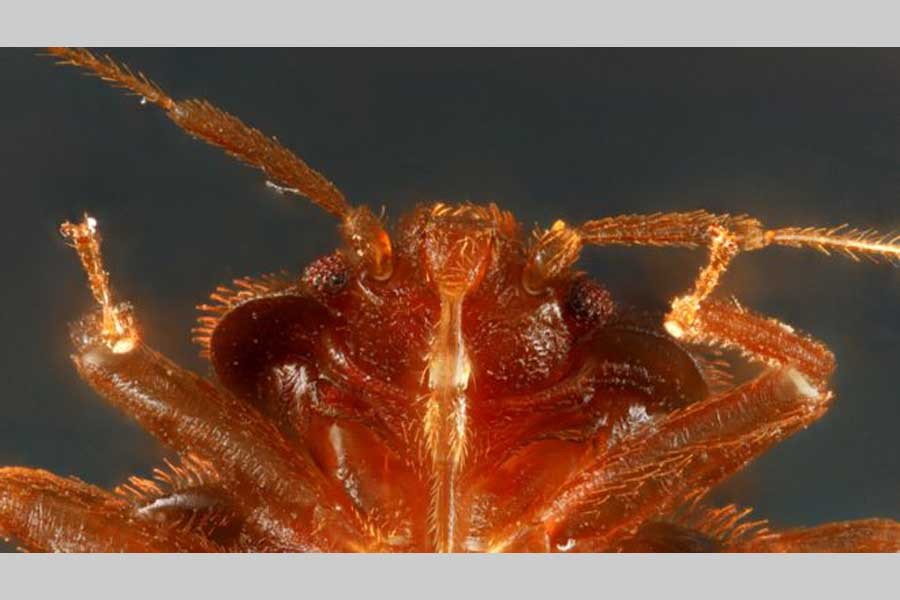
Published :
Updated :

A study that began as an investigation into the "utterly bizarre" way in which bedbugs reproduce has revealed they have existed for far longer than humans.
DNA samples from 30 species of bedbug revealed the insects had been around for at least 115 million years.
The blood-sucking parasites predate their earliest known hosts - bats - by more than 50 million years.
The surprising finding is published in the journal Current Biology.
Prof Mike Siva-Jothy, from the University of Sheffield's department of animal and plant sciences, who was part of the research team, said its initial investigation had been into what is known as "traumatic insemination".
Male bedbugs have a dagger-like penis, with which they stab the female to inseminate directly into her bloodstream.
"It's the reproductive version of peacock's tail - it's so extreme," said Prof Siva-Jothy.
"These animals are so strange - they don't do anything like any other animal does.
"It took 15 people 15 years to gather all the genetic samples, because these creatures are so cryptic."
Bed bug facts:
- They can drink three times their own bodyweight in blood in one sitting
- They can live as adults for up to a year - a very long time for an insect
- There are 100 different species and most of them live on bats - only two feed on humans
Most species the researcher sought out were hidden away in remote caves, where they feed on their bat hosts.
But once the team had samples from enough different species, they were able to build their genetic bedbug timeline - mutations that occur spontaneously in the creatures' genetic code act like a molecular clock, allowing the scientists to trace the bugs' evolution back through millions of years.
Dr Steffen Roth, from the University Museum Bergen, in Norway, who led the study, said: "The first big surprise we found was that bedbugs are much older than bats, which everyone assumed to be their first host.
"Although, we don't yet know what their host was at the time when T. rex walked the Earth."
Prof Siva-Jothy added that the bedbugs' biological "Achilles heel" could be hidden in their genetic code - particularly in the parts of the genome that were unique to the two species that fed on humans.
"These findings will help us better understand how bedbugs evolved the traits that make them effective pests," he said.
"That will also help us find new ways of controlling them."


 For all latest news, follow The Financial Express Google News channel.
For all latest news, follow The Financial Express Google News channel.